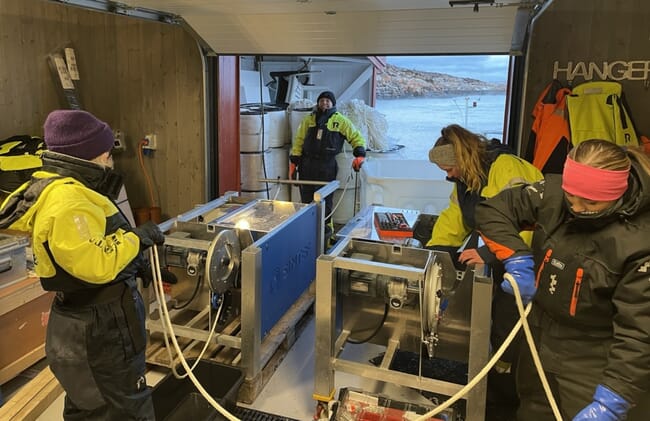
© Sintef Ocean
Sintef Ocean aims to build and operate a kelp farm near Frøya in Norway, having recently landed a licence.
During the natural growth period, kelp plants bind CO2 through photosynthesis. This process occurs during the 6-10 month growing period whilst at sea, after which the kelp is harvested. Post-harvest, the kelp will be processed into biochar.
Sintef Ocean also plans to test whether the kelp can be deployed on the seabed in deep water for permanent storage of CO2. If these storage methods are possible kelp could represent a climate-positive solution that is able to quickly remove and store CO2 from the atmosphere.
Norway’s long coastline is suitable for industrial cultivation of kelp. Calculations show that a kelp farm of only one square kilometre can produce approximately can produce 20,000 tonnes of kelp and by this capture 3,000 tonnes of CO2 annually. In addition to carbon capture, kelp and other macroalgae can be used in a variety of products such as food, animal feed, medicine, packaging and fertilisers.
The kelp plant outside Frøya will initially cover 200 acres. The first seedlings have recently been deployed in the sea, with a plan to harvest at least 180 tonnes of kelp in the summer of 2024.
“We see great potential for this solution - 180 tonnes of fresh kelp will capture around 23 tonnes of CO2 and this is a solution that can easily be scaled up,” stated Sintef Ocean senior researcher, Jorunn Skjermo, in a press release.
The project is part of the Norwegian Kelp Centre, a body whose projects include plans to develop and demonstrate a scalable technology for industrial kelp cultivation, with carbon capture as the main goal. The project is a collaboration between Sintef, DNV, Equinor and Aker BP, with support from the research council of Norway. Wintershall Dea and Ocean Rainforest have also joined as recent partners.




